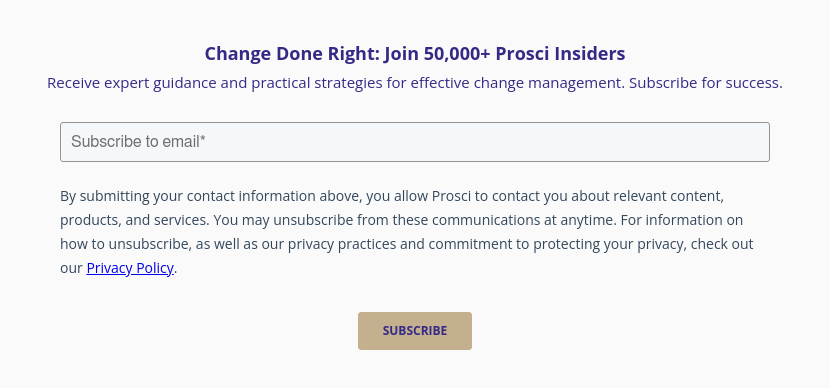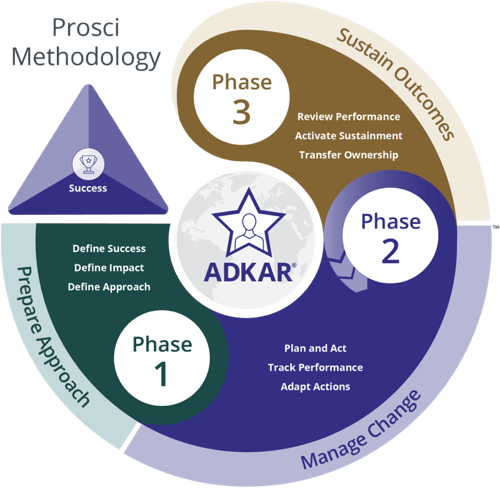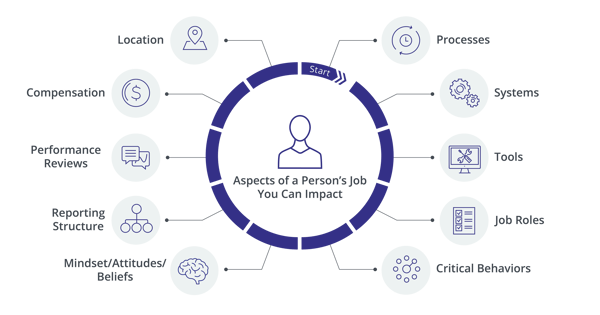11 Elements of Successful Organizational Change Capability

2 Mins
Updated: August 27, 2025
Published: March 15, 2023

Over the last few decades, change management has evolved from ad hoc approaches into a sophisticated discipline driven by structure, rigor, process and deliverables. Today, leading organizations are shifting from applying change management on a project-by-project basis toward institutionalizing and embedding change management to build a true organizational capability. Prosci calls this effort Enterprise Change Management (ECM).
Enterprise Change Management and Organizational Capability
Change management practitioners often struggle to identify what they want to achieve through ECM and what the organization might look like with change management capability. During our Enterprise Change Management Boot Camp, we often help attendees find a clear vision through an exercise called "Stand in the Future." The eleven statements below emerged from their inputs over time and can help you envision what building change capability could look like in your organization.
Envision Your Organization's
Change Capability
1. We meet and exceed expectations in change
For change initiatives happening in our organization, we routinely meet project ROI targets. We also routinely meet our stakeholder expectations, our customer expectations, and our shareholder expectations.
2. We handle the change in our organization
We know that organizations increasingly face change saturation. However, by implementing Enterprise Change Management, we as an organization have the increased capacity to handle change and reduce change disruption.
3. We expect and engage in change
Instead of an attitude of fear, the teams in our organization expect change, get excited about change, and engage in it. This change agility and appetite for change permeates the organization and all employees.


4. We see change as part of our job
Employees throughout our organization have internalized their roles in leading change. They see "leading change" as part of their job and have the skills to excel in their role as change leaders. In addition, metrics are in place to measure how well every employee is fulfilling their role.
5. We share a common language for change
Employees throughout the organization have developed a shared vocabulary around change. This vocabulary permeates the company culture at all levels.
6. We have a standard change management methodology
We as an organization have adopted and deployed a common change management methodology, including a full set of tools to support its common and consistent application. Whichever approach we have chosen is used on all projects.

7. We budget appropriately for change management
On each project, we have dedicated change management resources and a dedicated change management budget that matches the change management effort needed.
8. We include change management at the start of every project
We include user impact in every project definition, and we evaluate the people-side risks of the project. We are also careful to include change management activities in the project initiation process.
 Prosci's 10 Aspects of Change Impact
Prosci's 10 Aspects of Change Impact
9. We integrate change management, project management and improvement processes
We embed change management activities into our project management methodology. And we have change management present in our improvement systems, including continuous process improvement, strategic planning, and Lean Six Sigma.
10. We create an organizational footprint for change management
At the individual level, our organizational footprint for change management includes job roles and career paths. At the organizational level, our footprint could include a change management office, a community of practice, a center of excellence, or change agent networks.

11. We measure the impact of change management
We establish metrics for adoption and usage up front, and we measure these metrics as and after a project goes live. We focus on demonstrating the return on investment of managing the people side of change.
Enterprise Change Management
and Agility
As the pace, volume and complexity of change continues to increase, building organizational change capability remains one of the most important core competencies for organizations to develop. But building change competency and the agility that results from it takes a structured and intentional approach. And clearly defining your organization's future state of change capability is a critical step toward becoming more agile as an organization.



